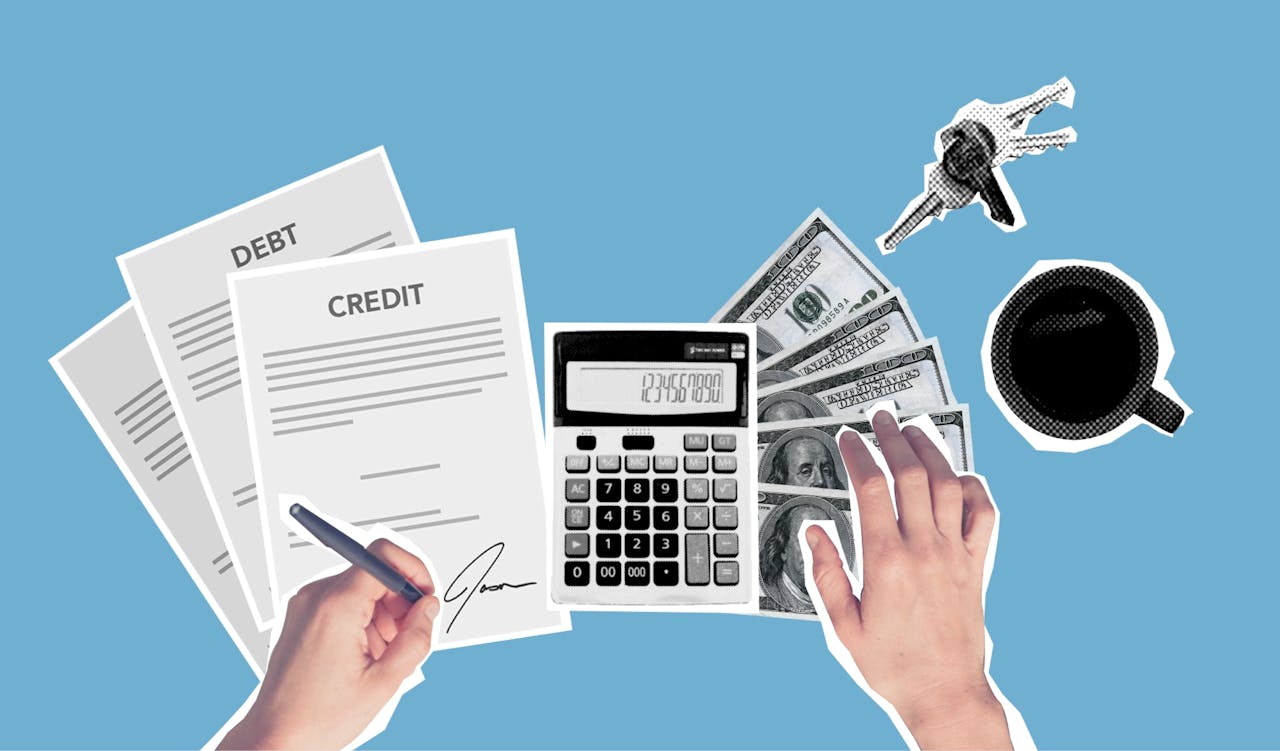Let’s face it: mortgage paperwork can be overwhelming, but understanding your mortgage statement is more important than you might think. In 2024, Americans owe a staggering $12.52 trillion on 85.35 million mortgages, with an average balance of $146,690. The median monthly payment? $1,520. And with 3.35% of mortgages delinquent by at least 30 days in the second quarter of 2024, staying on top of your payments is more important than ever.
This guide breaks down your mortgage statement in simple terms, showing you why it matters and how it can help you stay in control of your finances.
Understanding Your Mortgage Statement
A mortgage statement is your monthly snapshot of everything you need to know about your mortgage loan. It lays out essential information and acts as a guide to track your loan progress and stay on top of your finances. Regularly reviewing your mortgage statement isn’t just about staying informed – it’s also your chance to catch any errors or discrepancies early and get them fixed before they cause bigger issues. Understanding it means you’re in control of both your home and your money.
Key Components of a Mortgage Statement
Your mortgage statement gives you a detailed overview of your home loan to help you understand exactly where your money is going each month. Breaking down key information provides you with transparency and allows you to track your progress toward paying off your mortgage.
Below are the main components of a mortgage statement and what each one means for you as a homeowner.
Loan Details
This section outlines the key numbers of your loan, including the principal balance (the amount you still owe), the interest rate, and how these factors influence your monthly payments. This information is crucial for understanding how much of your payment reduces your debt versus how much goes toward interest.
Payment Information
Here, you’ll find the due date for your next payment, the payment amount, and the payment frequency (e.g., monthly). Staying aware of this information helps you avoid late payments, which can lead to fees or affect your credit score.

Escrow Information
If your loan includes an escrow account, this section details your escrow balance and how much of your payment is allocated toward property taxes and insurance. This helps you keep track of these additional payments without surprises.
Property Tax Information
Your statement may include specific details about your property taxes, including the amount due and the due date. This is especially helpful for homeowners who like to stay informed about how their tax payments are handled.
Transaction Activity
This section provides a record of fees, charges, or adjustments applied to your account. Reviewing this regularly helps to make sure that there are no unexpected charges, errors, or discrepancies.
Past Payments Breakdown
A detailed payment history shows how your previous payments were applied, including allocations to principal, interest, and escrow. This breakdown helps you understand your loan’s progress and confirms that all payments were accurately processed.
How to Read Your Mortgage Statement
Taking a few minutes each month to review your mortgage statement can save you from headaches down the road. Regularly review it to check for any changes in your payment schedule or interest rate since these details can directly impact your monthly budget. Always verify your payment amount and due date to ensure you’re on track and avoiding late fees. On top of that, look closely at any fees or charges to confirm they’re accurate and not unexpected. It might seem like a small task, but this simple habit helps you stay in control of your home loan and your finances.

Reviewing Your Mortgage Statement for Accuracy
Reviewing your mortgage statement for accuracy might not be the most exciting part of homeownership, but it’s definitely worth your time.
Start by checking for errors or inaccuracies in your payment history and account activity to ensure everything aligns with what you’ve paid. Confirm important details like your outstanding principal balance and interest rate, and take a close look at your escrow balance and payments to make sure they match what you were expecting. Look out for any past-due payments or unexpected late fees, and use this information to better understand how your payments are being allocated.
If you spot an error, write to your mortgage servicer at the address they provide for these types of requests. By law, they need to confirm receipt of your letter within five business days and respond within 30 days (excluding weekends and public holidays). Common mistakes to watch for include unauthorized charges, incorrect payment history, mishandling of partial payments, or failing to cancel Private Mortgage Insurance (PMI) on time. Staying proactive can save you money and stress down the line.
How an Escrow Account Works
An escrow account is a separate account set up by your lender to hold funds specifically for your property taxes and homeowners insurance. A portion of your monthly mortgage payment is deposited into this account, so these expenses are paid on time without you having to manage them directly.
You should review your escrow account regularly to confirm you’re not overpaying or underpaying for property taxes or insurance since these amounts can change over time. Understanding how your escrow account works and how it impacts your monthly mortgage payments can help you avoid unexpected increases and better plan your finances.
Year-End Mortgage Statements
Your mortgage year-end statement is an important document that summarizes all your mortgage activity over the past year. It includes important details like the total interest paid, any additional payments made, and your outstanding principal balance to give you a clear snapshot of the progress you’ve made on your loan.
This statement isn’t just for record-keeping – you may need it for tax purposes if you include any mortgage-related expenses for deductions. Plus, it’s a handy tool for financial planning, giving you a better idea of how your payments align with your long-term goals and confirm whether you’re on track with your repayment plan.

Tips for Managing Your Mortgage Payments
Managing your mortgage doesn’t have to be stressful. A few smart habits can help you avoid unnecessary headaches, save money, and keep your finances in order. Here are some practical and straightforward tips to make managing your mortgage payments a breeze.
Keep Track of Your Mortgage Statement and Review It Regularly
Think of your mortgage statement as your monthly progress report. Reviewing it regularly helps you stay on top of your loan, spot errors early, and stay informed about any changes in your payments or escrow.
Make Timely Payments to Avoid Late Fees and Negative Credit Reporting
No one likes paying extra fees, especially when they’re avoidable. Set up reminders or automate your payments to ensure you never miss a due date. This is an easy way to protect both your credit and your wallet.
Consider Refinancing Your Mortgage
If interest rates have dropped, refinancing could be a game-changer. It’s also a great opportunity to switch from an adjustable-rate mortgage (ARM) to a fixed-rate loan for more predictable monthly payments.
Looking to refinance soon? At Defy Mortgage, we believe that mortgages shouldn’t be a one-size-fits-all solution. Book a free consultation with us or give us a ring at (615) 622-1032 to explore loan options that are tailored just for you.
Shop Around for New Homeowners Insurance
When’s the last time you checked your insurance rates? Shopping around could land you a better deal and even lower your escrow payments. It’s a quick way to keep a little extra cash in your pocket.

Mortgage Statement FAQs:
- What is a mortgage statement?
A mortgage statement is a monthly document provided by your lender that outlines key details about your loan, including the outstanding balance, payment due date, interest rate, and escrow information.
- How do I get my mortgage statement?
Mortgage statements are usually mailed to you each month or provided electronically if you choose the paperless option through your lender’s online portal.
- What key information should I look for on my mortgage statement?
Check the outstanding principal balance, interest rate, payment breakdown (principal, interest, escrow), due date, and any fees or charges applied to your account.
- Can I make extra payments to pay off my mortgage faster?
Yes! Most lenders allow extra payments toward the principal, which can reduce the loan term and save you money on interest. Remember to specify the payment is for the principal.
- What is the escrow account mentioned on my mortgage statement?
An escrow account is used by your lender to collect and manage funds for property taxes and homeowners insurance, which are included in your monthly payment.
- What happens if I miss a mortgage payment?
Missing a payment could result in late fees, a negative impact on your credit score, and potential foreclosure if not resolved. Contact your lender immediately to discuss what your options are.
- Why did my mortgage payment amount change?
Payment changes usually occur because of adjustments in property taxes, homeowners insurance premiums, or interest rate changes for adjustable-rate mortgages.
- What should I do if I don’t receive my mortgage statement?
Contact your lender to confirm your mailing or email address and request a copy. You also might be able to access it through their online portal.
- What should I do if I find an error on my mortgage statement?
Write to your lender to dispute the error, providing documentation if possible. By law, they must acknowledge your request within five days and respond within 30 days.




